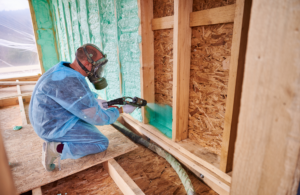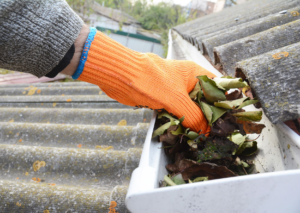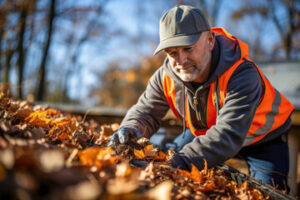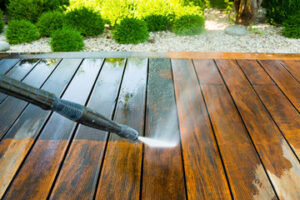Mold remediation is the process of cleaning and restoring items that have been affected by mold. It is a serious process and requires professional help.

The first step is assessing the problem and containing it. This involves plastic or polyethylene sheeting and negative air machines to keep spores from spreading to other areas of the property.
Remediation is a step-by-step process that includes containment, cleaning and prevention. Molds grow when exposed to moisture, so identifying and fixing the source of moisture is a critical first step. Remediation services can include a range of solutions from surface cleaning to removing porous materials and disinfecting surfaces with antimicrobials. In addition, a professional can advise about any ongoing maintenance and support needed to keep molds from returning.
In the containment phase, a restoration company will set up barriers to isolate the affected area from other parts of the home. This involves sealing the area with polyethylene sheeting, if necessary, to prevent cross-contamination. All supply and return air vents, doors and chases should be sealed in the containment area as well. If there is heavy mold growth on ceiling tiles, the contaminated areas should also be contained to avoid impacting HVAC systems.
During this stage, a professional will use biocide sprays to kill mold spores and sanitize all surfaces in the affected areas. Porous items that are impacted by mold need to be removed, including carpeting, fabrics and drywall. These materials will be bagged in thick, air-tight bags and wiped down to eliminate mold spores before disposal. Non-porous materials, such as wood wall studs and insulation, will be cleaned with commercial-grade antimicrobial cleaners and disinfectants to eliminate mold.
Once the surfaces have been cleaned, they should be allowed to dry. This is usually done with fans or dehumidifiers and may take one to five days. Once the moisture levels have returned to normal, the cleaned materials can be reconstructed.
While the cleaning and sanitizing processes are underway, the restoration team will inspect the entire property to ensure that no other areas are affected by the water damage. If the inspection finds that additional repairs are required, these should be completed as soon as possible to minimize the chance of mold growth. After the cleanup and sanitizing are complete, the remediation team will test the air to make sure that mold spores have not returned. Once the test has been cleared, a certificate of clearance will be issued and reconstruction can begin.
Removal
In the mold remediation and damage restoration process, professionals first create containment between the affected area and other parts of the building. They then use fans and dehumidifiers to bring the humidity level in the area back to normal. This prevents any spores that have become airborne from spreading to other areas of the home.
They then begin cleaning the area. They will vacuum surfaces with a HEPA-approved vacuum cleaner to remove any dust, debris or microbial volatile organic compounds (MVOCs). Afterward, they will wipe down all surfaces and scrub them with a non-toxic cleaning solution. A mix of equal parts white vinegar and water will work well for most surfaces. After scrubbing, the professionals will rinse the surface and dry it with fans and dehumidifiers.
If the area has a lot of porous materials, such as drywall or insulation, they will need to be removed and discarded. The professionals will also use a biocide, which is an EPA-approved chemical that kills all the mold spores.
When they are finished, the professionals will then encapsulate any remaining spores with an antimicrobial solution. Then, they will clean and sanitize the walls to prepare them for painting or other finishes.
While it is possible to do some of this work yourself, professional remediation is a must when dealing with toxic black mold or any other serious issue. These experts know the best techniques and precautions to take to keep everyone safe. They also can identify the underlying issues and fix them to prevent future problems.
Before starting the cleanup, you should make sure that no objects or furniture are blocking your access to the affected area. You should also cover floors and other surfaces to protect them from any spills. In addition, you should cover any plants or other items that could be harmed by bleach or other mold-killing chemicals. It is also important to protect yourself from breathing in any spores while you are working. It is best to wear a mask to avoid inhaling the mycotoxins, which can cause various health conditions including rashes, headaches, and gastrointestinal issues.
Disposal
Once the mold is gone, it’s important that all the contaminated materials and items be disposed of properly. A certified hazardous waste company can transport the materials and ensure they are disposed of in compliance with local laws. This is especially true for large remediation projects, where items like drywall and wood may need to be thrown away.
Mold thrives in moist conditions, so the first step of a remediation is to eliminate the source of the moisture. This can be done by repairing leaks, improving ventilation and using dehumidifiers. It’s also important to take precautions to prevent mold spores from spreading to other parts of the building. This is often achieved by sealing windows and other openings.
The next step is to identify the type of mold that’s growing and assess its impact on the property. This includes evaluating health risks for people with allergies, asthma or weakened immune systems. It’s also essential to evaluate the extent of the damage to the building’s structure and materials.
After assessing the property, a mold remediation expert will isolate the affected areas by sealing windows and other openings. Then they’ll use plastic sheeting to add an extra layer of protection. They’ll spray the area with a biocide solution, which will kill any remaining mold spores and keep them from spreading to other areas of the home.
This step is vital, because if the mold spores are allowed to spread, they can lead to serious health problems and even death in some cases. For example, black mold (Stachybotrys chartarum) requires constant moisture to grow and produces toxic mycotoxin spores that can be inhaled or ingested by humans and animals. These spores can cause a variety of symptoms including headaches, fatigue, nose and throat irritation, skin rashes, and even gastrointestinal issues.
All cleaned and disinfected materials are then dried to ensure that no water remains. Some expert remediators will speed up the process by using fans and dehumidifiers. Then they’ll replace or rebuild any damaged materials. If a client wants to save certain items, they can be tested for mold contamination before returning them to their home or business.
Reconstruction
Mold can be damaging to items such as carpets, clothes, and hard goods, but contents restoration technologies have advanced to a point that some of these items are salvageable. Usually near the start of the remediation process, a contents pack out will take place. This will involve a restoration company taking away saveable items such as textiles, photos, electronics, and other hard goods to be restored off site.
The next step involves sanitizing and decontaminating the affected area. In this stage, the mold spores are treated with biocide or fungicide solutions. These chemicals work to kill the spores and prevent them from growing and spreading again. It is important that these chemicals are not diluted and that the sanitizing is done thoroughly, as mold spores can be hidden in porous materials like wood or paper.
Any contaminated materials are then removed from the area and disposed of according to EPA guidelines. This can include drywall, insulation, and carpeting. The contaminated items need to be bagged and sealed in thick, airtight plastic bags to contain any hidden spores that could have spilled during cleaning or removal.
Once the contaminated material is removed, the team will wipe and scrub the surfaces to clean them. This is done to remove the spores and to prepare the surface for reconstruction. This step is crucial for health and safety as it ensures that the spores are completely eliminated from the space.
After the scrubbing, the remediation team will use fans and dehumidifiers to dry the remediated area and make sure that there is no moisture left behind. This is necessary to ensure that the spores are killed and can’t grow back.
Finally, the remediated area is tested. Moisture readings, humidity levels, and visual cues are all examined to ensure that the space is safe for reoccupation. The test results are also used to determine whether the reconstruction can begin.
When it comes to protecting your property from mold, the most important thing is to act quickly. Mold can spread incredibly fast and it only takes 48 hours for it to colonize an entire room. In addition, it can cause major damage to your property and health. Addressing the water problem immediately can help to stop mold growth before it gets out of hand and prevent the need for expensive remediation.








